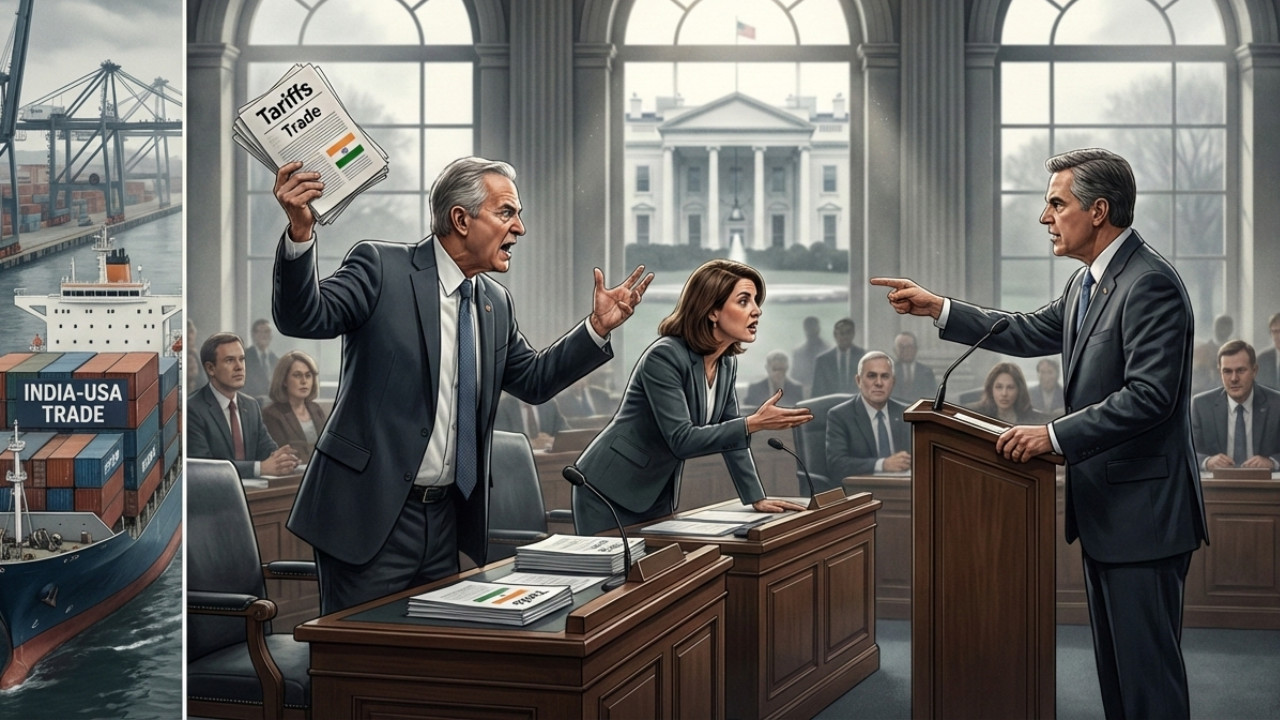A GTRI report advises India to negotiate cautiously with the US and prioritize self-reliance over dependence on Washington. The think tank analyzed the impact of US tariffs on China, suggesting India should safeguard its strategic autonomy and strengthen ties with both Western and BRICS nations to mitigate trade shocks.
Trump’s Tariff Shockwave: What India Needs to Know
Donald Trump’s proposal to slap a 100% tariff on all Chinese goods imported into the US has sent ripples throughout the global trade landscape. The sheer scale of the potential tariffs—we’re talking about hundreds of billions of dollars worth of goods—demands a closer look, especially from India’s perspective. It’s more than just a headline; it’s a flashing neon sign signaling a fundamental shift in how international trade agreements, or even tentative understandings, can be upended.
The immediate reaction might be to see this as an opportunity for India. Could Indian manufacturers step in to fill the void left by Chinese goods priced out of the US market? Sure, there’s potential. But such a simplistic view misses the bigger picture. This isn’t just about shifting supply chains; it’s about the reliability of the US as a trade partner.
The message for India is stark: no deal with the US, regardless of how carefully negotiated, is ever truly final. Political winds can change, administrations can shift, and agreements can be torn up seemingly on a whim. The implications for long-term strategic planning are significant. Businesses need certainty, predictability, and a reasonable expectation that the rules won’t change mid-game. Trump’s proposed tariff policy throws all of that into question.
Decoding the Impact on India’s Economy
While direct trade between India and the US is significant, the indirect consequences of a trade war between the US and China could be far more impactful. Consider the global supply chains that Indian businesses are integrated into. If Chinese manufacturers, facing crippling tariffs, are forced to reduce production or even shut down, that has knock-on effects for Indian suppliers. The impact is particularly acute in sectors like electronics, pharmaceuticals, and automotive components, where complex, cross-border production networks are the norm.
The proposed tariffs also raise the specter of retaliatory measures. If China responds with its own tariffs on US goods, the global economy could enter a period of prolonged trade friction. This could lead to slower global growth, reduced demand for Indian exports, and increased volatility in financial markets. Investors tend to shy away from uncertain environments, which could limit foreign investment in India.

Beyond economics, there’s a geopolitical dimension. India and the US have been strengthening their strategic partnership in recent years, particularly in the context of the Indo-Pacific region. However, trade tensions could strain this relationship. India needs to carefully balance its strategic interests with its economic ties to both the US and China.
Diversification and Resilience: Key to Navigating Trade Uncertainty
So, what should India do? The answer isn’t simply to hope for the best. Instead, Indian businesses and policymakers need to proactively build resilience into the economy. Diversification is key. This means reducing dependence on any single export market or source of imports. Exploring new trade agreements with other countries and regions, like the EU, the UK, and Southeast Asia, is crucial.
Moreover, India needs to focus on strengthening its domestic manufacturing base. Initiatives like “Make in India” aim to encourage local production and reduce reliance on imports. Investing in infrastructure, improving the ease of doing business, and promoting innovation are all essential steps. This will not only make India more self-reliant but also more attractive to foreign investors seeking a stable and predictable business environment.
Consider also the importance of strategic autonomy. While collaboration on technology and defense with the United States is welcome, depending on the US as a stable and reliable economic partner is a risk that many are not willing to take. If there are any lessons from the recent political turbulence, it’s that depending on the US is not always a viable plan.
The recent discussions of decoupling from China are alarming. See more about supply chain challenges and decoupling risks.
Charting a New Course in Global Trade
Trump’s threat of 100% tariffs serves as a wake-up call. It underscores the fragility of the global trade system and the importance of strategic foresight. India has the potential to be a major player in the global economy, but it needs to navigate these turbulent waters with caution and a clear understanding of the risks and opportunities. A multipronged approach that emphasizes diversification, resilience, and strategic autonomy will be essential for India to thrive in an increasingly uncertain world. The future belongs to those who are prepared to adapt and innovate.






